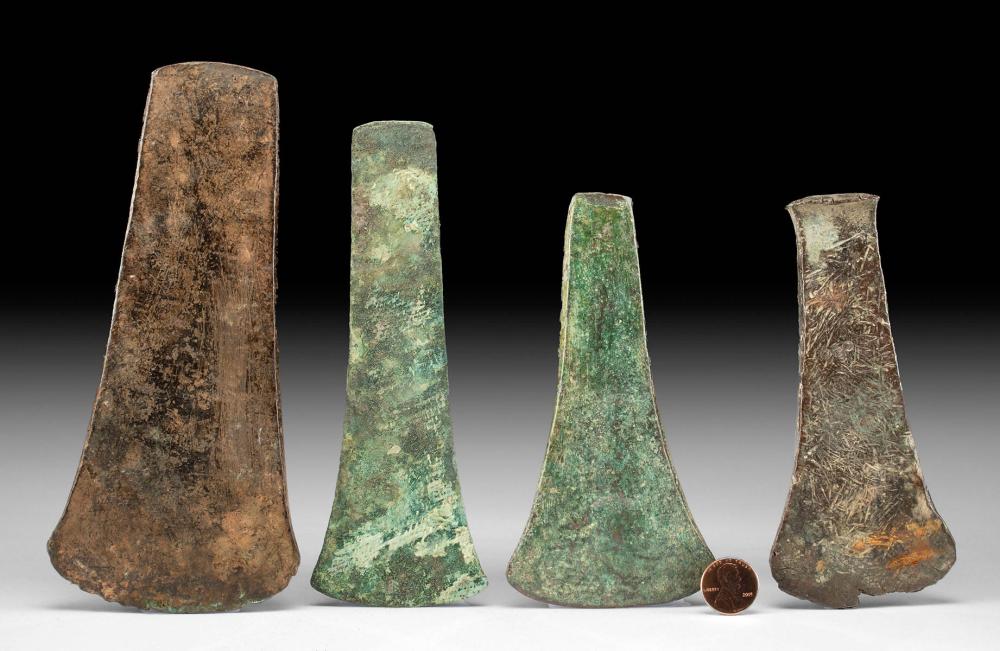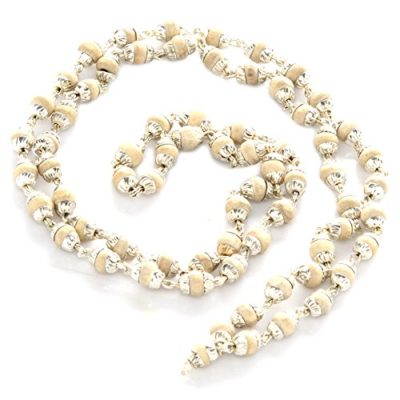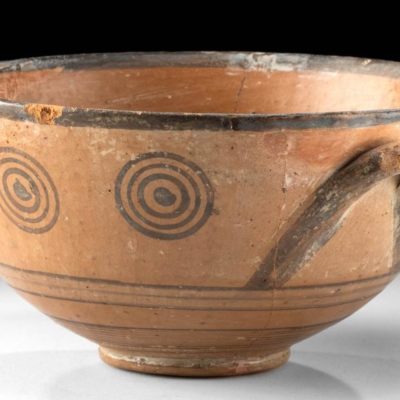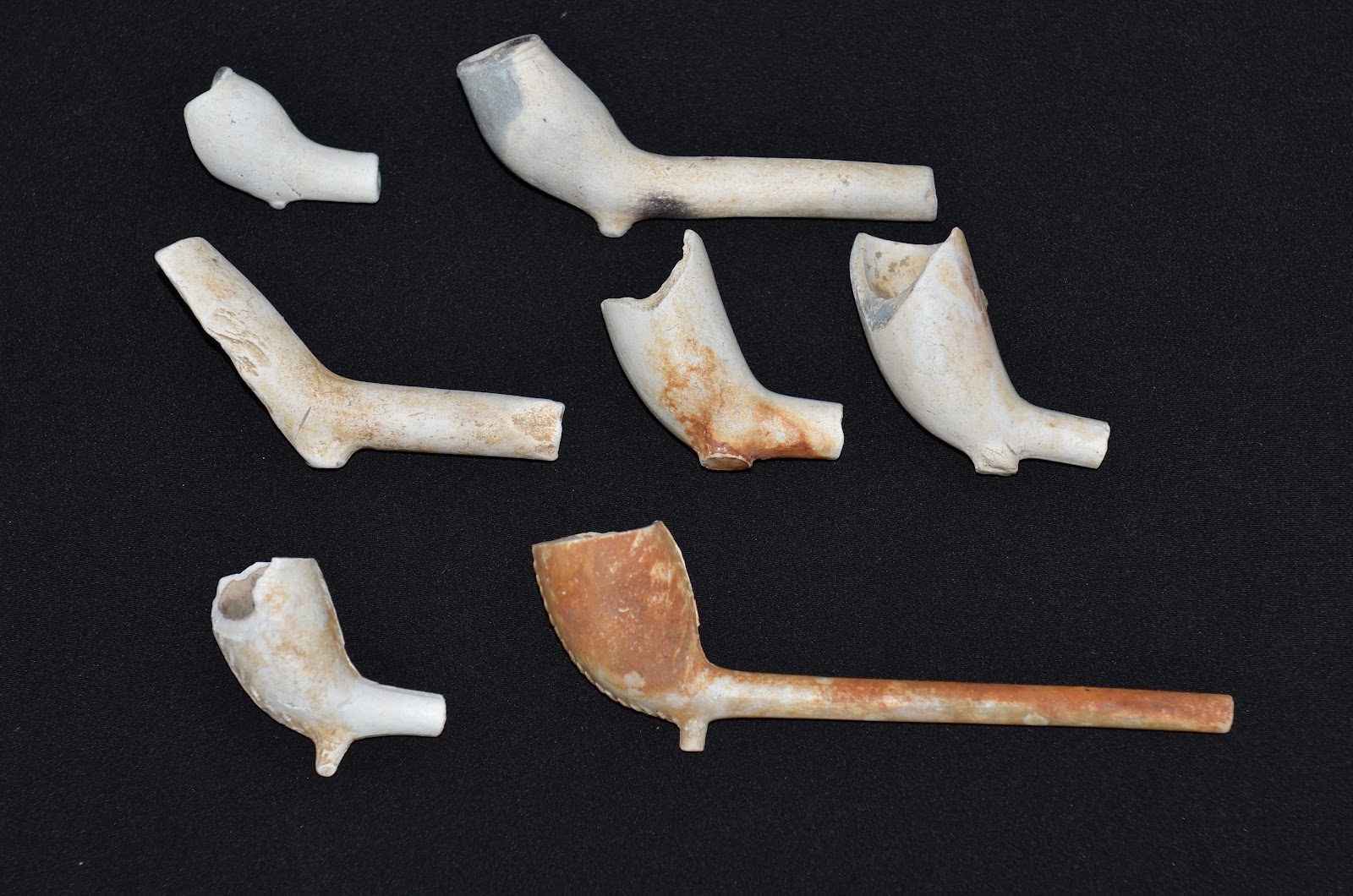The Indian village, known as Upper Sauratown, in Stokes County, NC, was lived in for around a hundred years in the seventeenth century AD and has produced many extraordinary ancient Indian artifacts including arrowheads, effigy pottery, discoidals, shell gorgets, stone pendants and a ceremonial stone spud. One artifact that was recovered many years ago, near the site, and probably dates to the time of occupation is very unique for the region because the material is simply not found there – a Sauratown copper celt.

The prehistoric natives started making stone ungrooved axes or celts during the Late Archaic Period or at least 4,000 years ago. Various types of stone that could be utilized for these tools were and still are found in the Piedmont and would have been available to these people for making cutting tools such as celts. Copper, though, is not found in the Piedmont. So just from where was this material derived and how did it get to north-central NC?
Copper is found in many parts of the world and has been used by people for thousands of years for tools and weapons. During the times of the Roman Empire, much copper was mined on the island of Cyprus and the metal was given the name cyprium or “metal of Cyprus”. This was later changed to cuprum and later Anglicized to the name we now use – copper. Pure copper is reasonably soft (being about 4 on the Mohs hardness scale) and malleable and has a color of red/orange. Along with gold (yellow color) and osmium (blue color), copper is only one of three elemental metals with a color other than silver or gray. In the United States, large deposits of raw copper were anciently found in the current state of Michigan and the prehistoric natives did make use of this metal, as early as 5,000 BC, for tools including knives, spears and ungrooved axes. During the last ice age, the glaciers scoured the land in the upper Midwest and exposed much raw or float copper for the Amerinds to use. They traded this copper throughout the eastern half of our country both as raw nuggets and sheets as well as in finished products. We know this because artifacts made of copper from that region have been found as far south as current Georgia, Alabama and Texas and as far northeast as Wisconsin Pennsylvania and New York. Copper is also found in the Appalachian Mountains and a deposit called Ore Knob Mine was discovered in the nineteenth century in North Carolina. It produced over thirty tons of copper sulfide called chalcopyrite (which is yellow-red and iridescent) between in 1855 and 1962, when the mine was closed.
In the early 1960’s an amateur archaeologist found the copper celt pictured with this article. He did not exactly know what he had found because it certainly does not appear to be an ancient Indian artifact. The tool is somewhat crude and small and is not stone. And metallic implements like this one are usually not found in this region. At least one other copper celt, though, has been found in the Tar Heel state and it was discovered at the Town Creek Indian Mound in Montgomery County. According to studies done by archaeologists on copper artifacts found in the upper Midwest, there are two types of copper from which tools were made. One type was thin natural sheet copper and ancient artisans folded it and the folds pounded with a stone hammer until they were welded to one another. This process would have been continued until the desired size was obtained. The piece then would have been abraded by using sandstone or similar abrasive material until the final shape and sharpness was determined. The other process for making tools was to take a chunk of raw copper and begin pounding it in order to reach the desired size and shape for a tool. The problem with both these techniques was that this hammering would make the raw copper more and more brittle and thus it would eventually break or shatter. The ancient natives solved this problem by periodically heating the tool to a red hot state which enabled them to continue hammering without destroying the copper. When the artisan brought the projected tool to the size he wanted, the final abrading and sharpening, same as with the sheet copper tools, would have been done. This copper celt is 4 ¼ inches long by 2 ¼ inches wide at the upper or poll end by exactly one inch thick again at the poll. It is of an unusual shape in that normal stone celts have poll that is much smaller than the bit. This tool is in reverse of that with the poll end being the largest area, so maybe it was made as a wood splitting maul to be pounded by a hammer stone into a log rather than being used as an axe. Since we will never know for sure as to its ancient usage, it will continue to be called a celt. The cutting end or bit has been sharpened and the entire celt was anciently well polished and still retains some polish and iridescence. The question now is from where the copper was acquired – Michigan or North Carolina? The answer to this query might be as easy as looking at a map. The Ore Knob Mine is in mountainous Ashe County, NC near the town of Jefferson and is only a short distance due south of the town of Saltville, Virginia and would have been easy for the ancient Saltville natives to travel there and acquire copper material. It is theorized that the Indians in Saltville fled the region after a disastrous clash with Spanish in AD 1567 and slowly moved East to current Stokes County, NC and eventually to the village of Sauratown. If this is true, did one of the native warriors bring with him the copper celt made from metal obtained at Ore Knob? This ancient relocation theory along with the natural iridescence on this celt, points to an acquisition of the copper at a Southeastern mountain location. There are tests that can be made on the copper to actually determine if it came from Michigan or Carolina but this writer, at this point in time, is of the belief that it was obtained in the region that would become North Carolina, and has no interest in in scientific testing. Of course that could change in the future and I may decide to have the tool evaluated for exact origin of the metal. But as of now, in my mind it is a tool that was made several hundred years ago from native Carolina metal and has become a very rare Sauratown Copper Celt.
REFERENCES:
Arnett, Ethel S. 1975
THE SAURA AND KEYAUEE IN THE LAND THAT BECAME GUILFORD, RANDOLPH AND
ROCKINGHAM
Coe, Joffre L. 1995
TOWN CREEK INDIAN MOUND: A NATIVE AMERICAN LEGACY
Goodman, Clair B. 1984
COPPER ARTIFACTS IN LATE EASTERN WOODLAND PREHISTORY
Hudson, Charles 1976
THE SOUTHEASTERN INDIANS
Maus, James E. 2010
“Three Saltville Style Gorgets and a Crystal”, JIMMAUSARTIFACTS.COM
Rights, Douglas L. 1947
THE AMERICAN INDIANS IN NORTH CAROLINA
Ward, H. Trawick & R. P. Stephen Davis 1997
TIME BEFORE HISTORY





